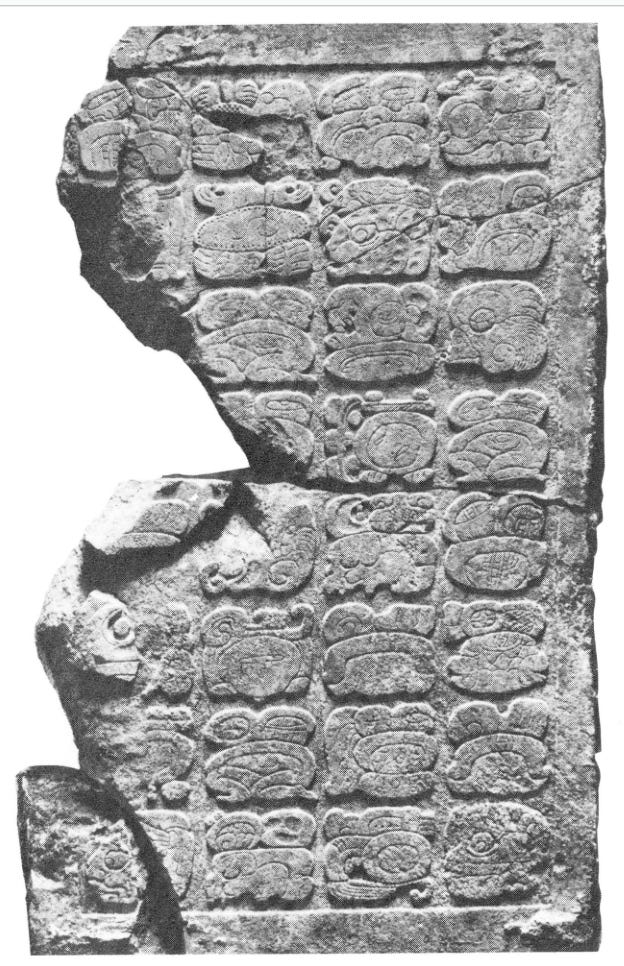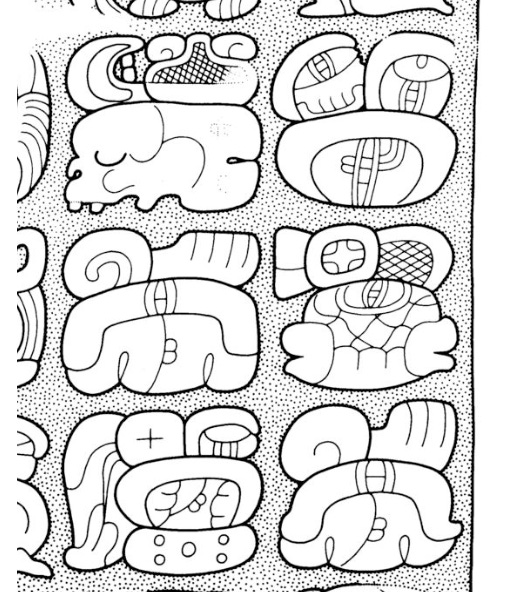The First Turtle: A history born in battle
Piedras Negras was a powerful Maya city, but their first ruler had his life dangled in front of him
In the late Classic era of Maya history (late 600s to 700s AD), the Piedras Negras kings would be known as some of the best dads of the Maya world. Seriously, there’s research on it! Admittedly, some of it is mine, but Flora Clancy also talks about it.
But they won their “world’s best ancient dad” awards by breaking through some generational trauma, that was for sure.
The ancient Maya recorded their history in hieroglyphs, which is a fabulous boon for those of us who care what some seventh-century king was named. But not all of the records survived, and sometimes the way they survived is unexpected.
For example, the first known king of Piedras Negras isn’t written about at Piedras Negras. (Or, if he is, we haven’t found it yet.) Instead, he appears at the site of his rivals, the city of Yaxchilan—and he appears in a very unfortunate situation.

The Maya often manipulated the historical record, destroying monuments of kings they didn’t like, breaking up monuments they did like to use in later constructions. In the 500s, the kings of Yaxchilan created a series of lintels about all the awesome stuff they’d done on the battlefield. Later, in the 700s, the ruler of Yaxchilan reused these lintels, and it’s a good thing he did, or they might have been lost forever.
The neat thing about these lintels is they have a king’s list of the early days of Yaxchilan. They tell us, for example, that the seventh king in Yaxchilan was named Jatz’ Jolo’m . . . or the seventh king worth remembering, anyway.
Jatz’ Jolo’m performed quite the feat during his administration: He captured Itzam K’an Ahk, the ruler of Piedras Negras. It’d be somewhat like if William III of England captured Louis XIV of France in the 1600s.
You might think, ‘Well, I saw Apocalypto. That poor guy was doomed.” And early archaeologists agreed.

Except Jatz’ Jolo’m was the seventh ruler, and an inscription mentions that the eighth ruler captured a servant of the king of Piedras Negras, a king named . . . Itzam K’an Ahk. So was one king named Itzam K’an Ahk and the next was, too? Possible. They definitely liked to repeat names. The only reason we know for sure this guy’s name is Itzam K’an Ahk is because later kings use that name.
Because of this, we used to call Itzam K’an Ahk “Ruler A & B.” I’m sure some folks still view him as two rulers.
But human sacrifice in ancient times was much more complicated than we give it credit for. It wasn’t just a bloodlust like the Spaniards made it seem. It was a political tool used similarly to the way the Spaniards executed heretics—aka outsiders. Few folks think the Inquisition was a good thing, but for most people, it doesn't define Spanish history—and it shouldn’t.
I think human sacrifice was the same way. Many people make it the definition of Maya culture when in reality it was only a part. It may not have even been that common in the Maya area compared to central Mexico, but that’s a debate for a different day.
And just like it was possible to stand before the Inquisition and argue your case and manage to make it out with minimal exposure to the rack, there is evidence that Maya captives escaped sacrifice sometimes.
So although Itzam K’an Ahk was captured by Ruler 7 of Yaxchilan, he seems to have escaped, been ransomed, or returned to his position but as a vassal.
Yaxchilan probably expected him to do what they said after they returned him. There may have been a formal treaty, with specific conditions. Itzam K’an Ahk seemed to have ignored them all, because a few years later, the war was back on. Ruler 8 of Yaxchilan captured another servant of Piedras Negras. By this point, we know Itzam K’an Ahk was dead—the new king’s name was Yat Ahk, who we’ll look at in a week.
But Itzam K’an Ahk didn’t die in battle. He returned from captivity uncowed by his experiences. While we don’t know much about him besides that, we do know that his descendants were about to lead Piedras Negras into its golden age.



